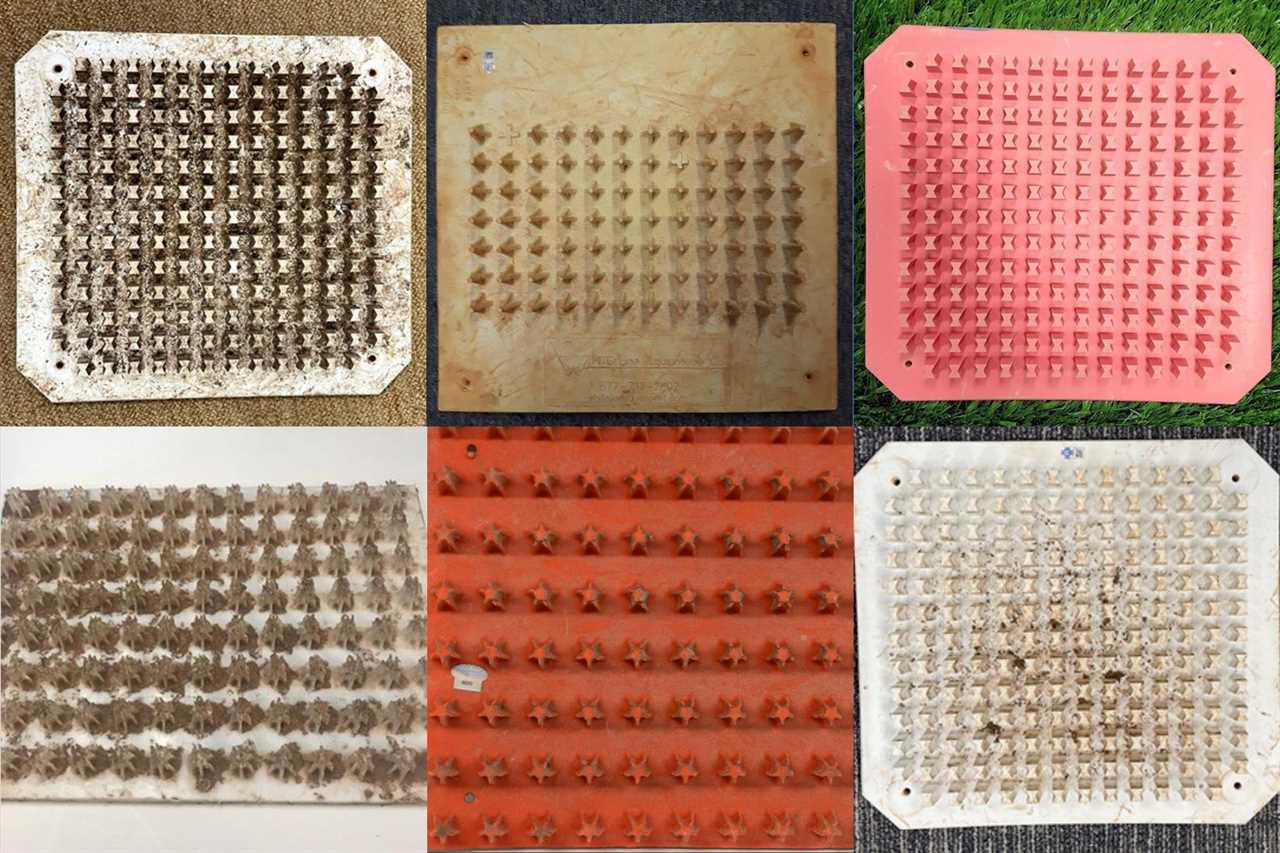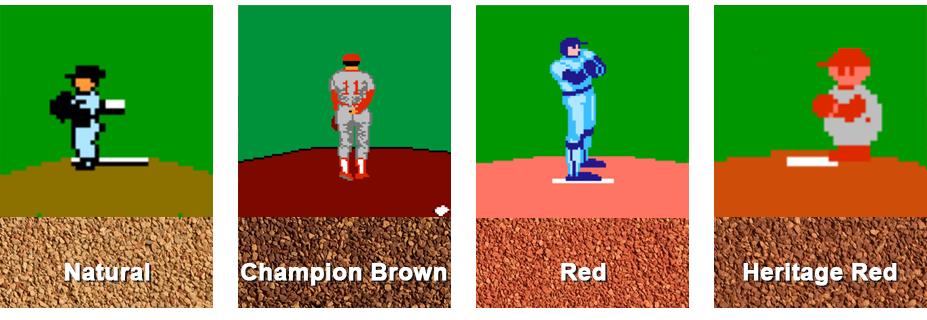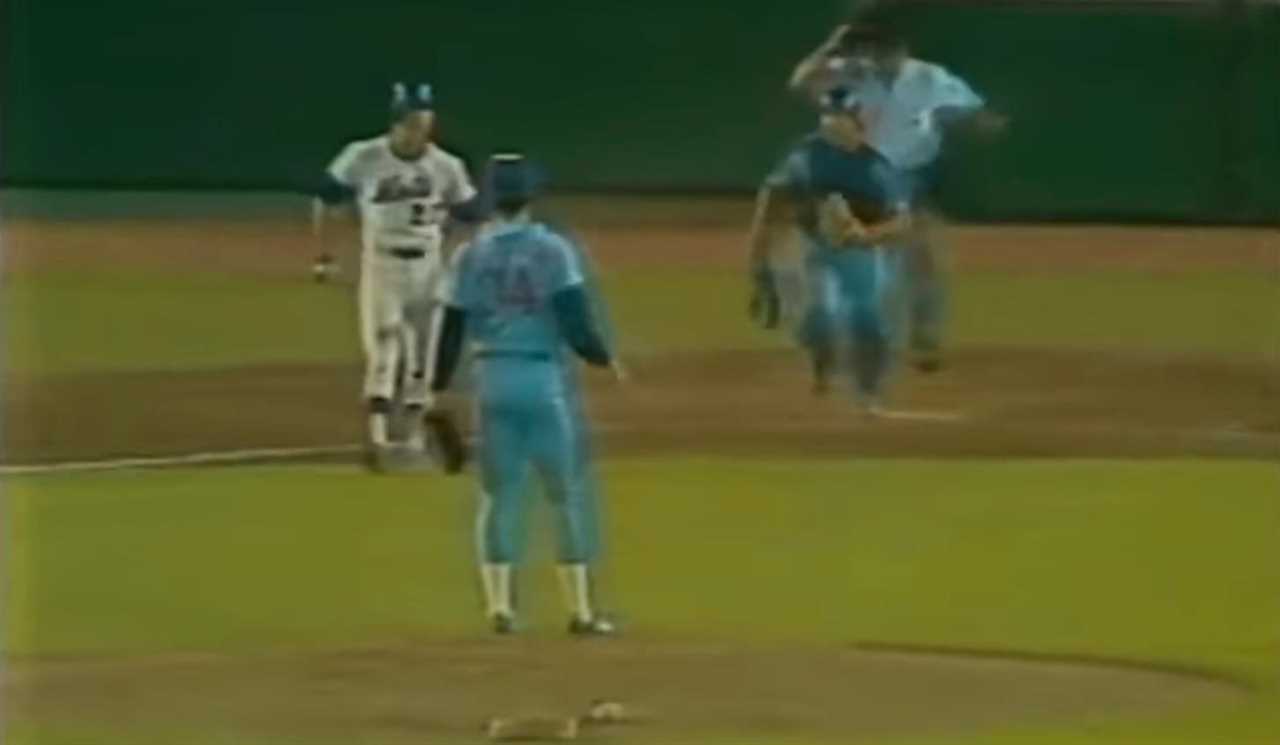A couple of weeks ago, I spent too much time staring at the back of the Target Field pitcher’s mound. Like, way, way too much time. I watched hundreds of video clips. I scoured pictures from image services, social media, and satellites. It could have been boring. It probably should have been boring, but I was looking for the answer to a question that I found interesting, and that was enough. At a certain point, I realized I had another interesting question on a subject that should have been even more boring. I’d been staring at the mound for so long that I started wondering about the spiky little mat that pitchers use to scrape the mud out of their spikes. Where did it come from? How long has it been there? Why haven’t I ever actually seen a pitcher use one? How is it possible that I’ve been watching baseball my entire life and never once thought about this thing before? It might be the only object on a baseball field whose name I don’t know. I must have spent more time looking at that white piece of plastic or rubber or whatever-the-hell-it-is than I’ve spent looking at anyone I love, and yet for the life of me, until two weeks ago I don’t think I’d ever spent one second thinking about it. So I started thinking about it.
That spiky little mat is called a cleat cleaner. Because teams often auction off game-used cleat cleaners, you can find some pretty good pictures of them. The ones that get sold are usually from memorable games, like no-hitters, playoff games, or really any game where the cleat cleaner was touched by Shohei Ohtani:

The cleat cleaner on the bottom right is from Game 3 of the 2022 American League Divisional Series between the Mariners and Astros, an all-time classic that lasted 18 electric innings. Somebody paid one hundred and sixty bucks for it. The one on the top left was used by Ohtani in a regular season game in Minnesota that took place after both teams had been eliminated from playoff contention. Somebody paid six hundred bucks for it, and you know what? I get it.
Let’s start with why cleat cleaners are necessary in the first place. Perhaps you remember from science class that soil is made of a combination of sand, silt, and clay. That’s what the infield dirt is made of too. Don’t get me wrong; the infield dirt is extremely fancy dirt, a finely proportioned blend that’s carefully sifted and lovingly massaged into a perfect playing surface by the grounds crew. It wouldn’t be caught dead fraternizing with the pathetic, low-class dirt in your backyard. But for the most part, it’s still just dirt.
The pitcher’s mound, on the other hand, isn’t made of regular dirt at all. The grounds crew needs to be able to firmly pack it, both so that it can be sculpted to the rulebook dimensions and so that it can withstand the stress of pitchers pushing off and landing over and over again. When you factor in warmup pitches, it needs to hold its shape over roughly 400 pitches a night. For that reason, it’s just made of clay, which adheres to itself and can be compacted with a tamp, though you can’t see the clay most of the time, as it’s covered by a thin layer of soil conditioner.
As Stephanie Springer wrote in The Hardball Times in 2019, “Groundskeepers apply soil conditioners, like calcined clay or vitrified clay, to the infield skin or to the very top layer of the infield to fight compaction and improve drainage. These top dressings on the infield skin also can prevent slick and muddy conditions and can be a quick fix, as the infield dirt sees quite a bit of wear throughout the course of the game.” Turface, a leading brand of field conditioner, is made of calcined clay, and the company actually dyes it so that they can sell it in four different shades. That way, your team’s groundskeeper can decide what color they want the dirt to be, presumably based on which Nintendo baseball game they played when they were growing up:

Underneath the soil conditioner, the same properties that make clay great for use as a pitching mound also make it great for getting caught in a pitcher’s spikes. It sticks to the cleats, building up and getting more compacted until the pitcher has to do something about it.
If you played sports as a kid, you likely remember how you cleared mud from your cleats after practice. Before you got inside, you’d take them off, grab each one by the heel, and whomp them together as hard as you could. The clapping sound would echo off the surrounding houses, and clods of dirt would go flying in every direction. As I was writing those two sentences, I was surprised by an overwhelming blast of nostalgia. For some reason, big league pitchers don’t stop in the middle of the game to sit on top of the mound, remove their shoes, and clap them together, showering the infield with mud. I can’t imagine why not. The ratings would go through the roof. Maybe you’re old enough to remember watching a game on a rainy day, when the camera would cut to a pitcher sitting in the dugout as he used a couple of taped-together tongue depressors to scrape the mud out of his cleats. It wasn’t a particularly great system.
The cleat cleaner has been around since at least 1962. That’s the year William H. Williams, of Silver Spring, Maryland, filed for a patent for “a mat having a plurality of projections fixed to its upper surface for removing mud or the like from around and between the cleats of an athletic shoe.” Two other cleat cleaners were patented in the 1950s, but neither looked like the ones we know today or like they’d work very well. On the other hand, the device Williams invented looks very familiar:

Six years later, Williams also invented a kicking tee for football. After that, he presumably lived a quiet life, content in the knowledge that he’d done his part to make the world a better place, especially for people who wear bumpy shoes.
I can’t say for certain when the cleat cleaner came to the big leagues, but I did track down a start date for a few teams, simply by watching video back from every year until I found one where the mound was sadly bereft of cleaning supplies. The Twins got theirs in 2010, the White Sox in 2008, the Orioles in 2004, the Diamondbacks in 1999 rather than their inaugural 1998 season, the Red Sox in 1997, the Yankees in 1996, and the Braves in 1990.
The Mets were earliest adopter I could find; they started using a cleat cleaner at Shea Stadium all the way back in 1980. I discovered this fact via some delightfully grainy footage of Mike Jorgensen charging the mound after Bill Gullickson threw a fastball right at his head:

You can’t see it in the still above, but Jorgensen pointed his bat right at Gullickson and then tried to carry it out to the mound, possibly because he didn’t yet know about the cleat cleaner and he thought Gullickson might want some help knocking mud off his spikes. No cleat cleaners were harmed in the ensuing brawl.
Although they’ve been around for a very long time, cleat cleaners are still changing. That’s necessary because pitchers, like an invasive species, tend to destroy their habitat. First, there’s the mound itself. A few innings into a game, as the cleats keep yanking chunks of clay from the mound, you can often see a patch of dark clay exposed under the soil conditioner by all the scraping and pushing off:

The equipment on the mound also gets punished. “After a few homestands, the pitching rubber will get chewed up from cleats, from the guys pushing off,” said Mike Deubel, head groundskeeper of the Rays, in a very cool YouTube video. “All the pressure of them kicking off on it, you’ll get a crease where it actually buckles.” In 2011, Chad and Cathy Kropff founded Bulldog Equipment specifically to solve that problem. Chad spent decades working on and leading grounds crews, and after years of hearing him say that somebody needed to make a better pitching rubber, Cathy figured they should take matters into their own hands.
After working on a pitching rubber and a home plate, Mike Boekholder, at the time the head groundskeeper for the Phillies, asked Bulldog to take a crack at cleat cleaners next. It turns out that cleat cleaners can break kind of a lot, especially the older ones that Bulldog set out to improve upon. They’re rubber pads with pegs on them, essentially just big, upside-down cleats themselves. And because getting clay out of a cleat is a little bit like getting hair out of a hairbrush, those pegs have to thread the needle in terms of strength. If the pegs are too flexible, they’ll just tickle the mud as it goes by. If they’re too strong, a pitcher could get a cleat stuck and suffer an injury. They have to strike a balance somewhere in the middle, with pegs that are strong enough to get the mud out, but weak enough that a pitcher giving his spikes a forceful cleaning can rip them right out of the pad:

“Chad started drawing on napkins yet again,” Cathy told me. It took a year to get the design and the rubber mixture right. “And we went through, goodness, different renditions,” Cathy continued. “The first edition, we made the spikes too hard, so when they would kick on it, the spikes would come right off. The second edition we made the spikes more flexible, and that seemed to work pretty good.” Bulldog is currently on its third iteration. Striking the right balance allows today’s cleat cleaners to last longer, but they still struggle on particularly muddy days. According to Chad, there’s also another risk factor: “Nothing’s really going to last long if the pitcher just gave up two home runs back-to-back. It’s kind of an anger management tool.”
In recent years, cleat cleaners have become more visible. The Yankees use an orange one, and several teams use black ones at least some of the time. The A’s, Pirates, and White Sox sometimes turn their cleaners sideways like absolute freaks. The Orioles and Brewers appeared to have brushes on their mounds rather than cleat cleaners. The Red Sox led the league, sometimes putting two on the mound, either because they want to be prepared in the event of some sort of cataclysmic, clay-accretion doomsday scenario, or because if you look at the mound from the right angle, they turn it into a big smiley face:

Neal Halvorson, of Trigon Sports, told me that the increased visibility on big league mounds has led to proliferation at the college and high school levels as well. Trigon used to sell cleaners made by another company, but when they realized how many orders they were filling, they started manufacturing their own. Neal also said that if the colors continue to get more and more fun, he wouldn’t be surprised to see MLB crack down and mandate that every team stick to white.
At this point, you’re probably wondering why I haven’t shown you any footage of a player actually using a cleat cleaner. There’s a reason for that: It’s super hard to find. If you’re watching a game on television, you’ll see the cleat cleaner on every single pitch, but I can just about guarantee that you won’t see anyone actually use it. Pitchers usually do so before the start of an inning, during the commercial break. At the very beginning of the game, the broadcast will show the starter warming up, but once they head to the back of the mound, it will often cut to a graphic of the visiting team’s lineup or the home team’s defense.
Even if a pitcher avails himself of the cleat cleaner right in the middle of an inning, the broadcast will find something else, anything else to focus on instead. Apparently, directors just don’t think that watching a man clean the mud off his shoes makes for good television. Before one Red Sox game, I finally saw Brennan Bernardino using the cleat cleaner, but the camera zoomed in too close to see his legs, and ESPN cut away to something they obviously found much more compelling: Alex Cora spitting sunflower seeds on himself.
Although we don’t see it happen, the cleat cleaner is definitely being used. The evidence is right in front of us, as clear as day! Well, it’s as clear as day at first, and then later it’s as clear as mud. Here’s a series of images from the same game, taken in the top half of each inning. You can watch the cleat cleaner get filthier and filthier as the game goes on:

Last week, I spent an embarrassingly long time trying to find footage of the cleat cleaner in action, and I only came up with two clips. After striking out several times, I finally hit pay dirt when it occurred to me that I should watch a game where the pitcher was doing something so special that the camera wouldn’t leave him, no matter what. This is the top of the ninth inning on May 11, 2016, when Max Scherzer tied a major league record by striking out 20 Tigers. At the very beginning of the ninth inning, with the fans surging to their feet, Scherzer suddenly noticed that something felt off with his right cleat. Cue the angels singing:
I know, it’s truly glorious. That series of nine images above was also taken from that game. Although the broadcast never showed anyone availing themselves of the cleat cleaner until the ninth inning, Scherzer had obviously spent the entire game treating it every bit as harshly as he did Detroit’s lineup. The only other time you’re likely to catch a glimpse of the cleat cleaner fulfilling its destiny is during a conference on the mound:
At this point, the broadcast is really stuck. The only action, such as it is, is taking place right next to the cleat cleaner. And just as in meetings at any other workplace, somebody is bound to get bored enough to look around for a way to pass the time. Eventually, performing some maintenance on your footwear seems like a good way to break up the monotony. After all, the back of the mound is a pretty boring place, unless you look at it for long enough.
Many, many thanks to Neal Halvorson, Chad and Cathy Kropff, and Don Slavik, who made this article much better and much more fun to write by sharing their time and their stories.
Source
https://blogs.fangraphs.com/please-tread-on-me-the-story-of-cleat-cleaners/
 Backyard GrillingWeekend WarriorsAdvice from DadBeard GroomingTV Shows for Guys4x4 Off-Road CarsMens FashionSports NewsAncient Archeology World NewsPrivacy PolicyTerms And Conditions
Backyard GrillingWeekend WarriorsAdvice from DadBeard GroomingTV Shows for Guys4x4 Off-Road CarsMens FashionSports NewsAncient Archeology World NewsPrivacy PolicyTerms And Conditions
